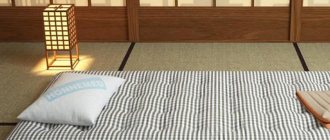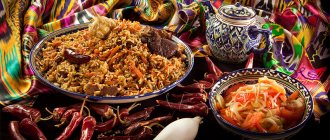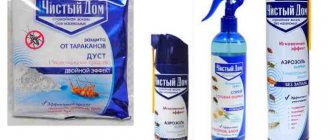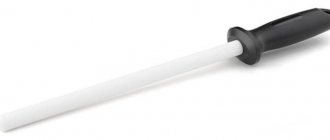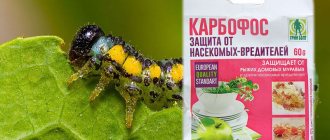The trend for safe cooking has led to the emergence of cookware made from previously unused materials. First came Teflon - for those who want to fry in a frying pan, but do not want to use oil. It was followed, as a representative of even safer cookware, by a ceramic frying pan. Safe, as environmentally friendly and natural as possible. Is this so, and how is ceramics better than Teflon? Let’s look at it in this article.
Modern ceramic frying pans are durable and long lasting.
What is a ceramic frying pan
The ceramic frying pan appeared after the Teflon one. What didn't suit users of Teflon frying pans? Just one nuance, small but significant: if you accidentally break the Teflon layer (for example, scratch it with an ordinary fork), the body is at risk of exposure to harmful substances that are released when heated from the Teflon that has lost its integrity. Even if you are as careful as possible, knowing that there is something harmful there, under the top layer, forces you to look for better options.
The use of aluminum and ceramics in the production of the frying pan makes the product durable and as light in weight as possible.
A ceramic frying pan became such an option: it is made of a safe material that does not evaporate any harmful substances even when heated to 450 degrees. And at the same time, nothing burns on it, like on Teflon, even without the use of oil.
Production technology
It's no secret that cookware with a non-stick layer can cause irreparable harm to human health. Most manufacturers of ceramic frying pans assure their customers that the coating is safe.
The non-stick layer of the product consists of natural substances: water, clay, sand, stones. Manufacturers of non-stick coatings do not use perfluorooctane liquid and polytetrafluoroethylene because these substances are carcinogenic. Manufacturers use strengthened glass, which does not allow the dish to burn.
How are ceramic coated frying pans made?
A ceramic frying pan is not made from ceramics alone. Ceramic is just a coating, so it would be more correct to call it a frying pan with a ceramic coating, which, like Teflon, is non-stick. Accordingly, the question many people ask is not entirely correct: what is better: non-stick coating or ceramic. But there is an answer: from a safety point of view, ceramic is better.
A ceramic frying pan, unlike a cast iron frying pan, heats up faster.
The base of ceramic-coated pans is made of stainless steel or aluminum. The mold is covered with ceramic glaze.
What is
To create a non-stick coating, water is mixed with sand. This mixture is then melted at a temperature of 1000 degrees. The resulting melt is applied in a thin layer onto ceramic frying pans. In order for the film to adhere tightly to the surface of the product, special substances are added to its composition.
Ceramic-coated frying pans are considered the safest cookware. Their surface practically does not emit harmful substances during cooking. The coating consists of several layers:
- aluminum;
- metal;
- silicon.
When heated, a ceramic frying pan does not emit harmful carcinogenic substances. The non-stick coating does not contain the polytetrafluoroethylene used in Teflon pans.
Some people claim that ceramic-coated pans deteriorate over time as their organic additives evaporate. It is a myth. A ceramic product never loses its properties if it is properly cared for.
Today, a ceramic frying pan made of marble or porcelain stoneware is especially popular. Both artificial and natural porcelain stoneware are used in production. The coating contains fine granite chips. Thanks to the high strength of these mineral particles, the dishes become more durable and their fragility disappears. The stable coating is safe for humans; it does not peel off at high temperatures.
What are the beneficial properties of a ceramic frying pan?
Ceramic coating is a layer of polymer composite material with silicon particles, that is, it consists only of environmentally friendly components, which are based on water, sand and stones.
However, these are not all the advantages of such a frying pan. These include the following:
- Non-stick effect. You can fry without oil or with a minimum amount. More economical for the wallet and healthier for the body.
- Scratch resistant. While Teflon was dangerous to scratch, ceramic can be scratched, but it’s not easy.
- Compatibility with metal objects: you can turn the cutlets over with a fork (this is not possible with Teflon ones).
- Uniform heating. Ceramics heats up perfectly to high temperatures, quickly and evenly. This allows you to get healthy dishes that are evenly temperature-treated.
- Easy to care for. The pan is easy to wash and clean, and many models are dishwasher safe.
- External attractiveness. Which is also not the last thing.
When heated in such a frying pan, no harmful compounds appear.
Is it true that food cooked in them is healthier because no fat is needed?
The race for terribly harmful cholesterol is gaining unprecedented momentum!
Everyone wants to be healthy, which is not surprising in our age of total environmental pollution and poor quality food.
And against the backdrop of this panic, many inventors and manufacturers make good money by quietly passing out marketing “canards” that only indirectly relate to the topic, but touch a nerve among the masses.
A simple example: a ceramic frying pan is a guarantee of health, since with it you will not consume excess cholesterol.
Just what is so harmful about it?
Cholesterol is an organic compound, so to speak, a natural fatty alcohol found in cell membranes.
We always have it in our bodies and 80% of the total amount of cholesterol is produced by the liver, adrenal glands, intestines, kidneys, and gonads. And the remaining 20% comes from food.
And if these necessary percentages are not enough, then the body will seriously go haywire, since cholesterol coming from outside is directly related to the normal functioning of natural cholesterol, which is responsible for the smooth functioning of the immune system.
It is also necessary for the production of vitamin D and hormones!
But the funny thing is that cholesterol cannot accumulate due to the fact that you consume “extra” fats.
If the cholesterol level is “off the charts,” then it is not the food that is to blame, but a failure in the metabolism of fatty acids, which occurs for completely different reasons, and from malnutrition and stress much more often than from regular overeating.
So, if you want to buy a ceramic frying pan for this reason only, don’t waste your money.
Moreover, for that matter, the harm of fried food is not in the large amount of fat, but in the crust itself, which contains carcinogens.
Types of ceramic frying pans
Users have rated the ceramic frying pan as a solution and now there are a huge number of them on the market, so once you decide to buy a ceramic frying pan, you still need to choose from a wide variety.
Types of frying pans by material
First of all, these dishes are divided according to the base material, because depending on it we get different properties that cannot be called good or bad - it depends on the nature of use.
Made of cast iron
Based on cast iron, these are frying pans for true connoisseurs of everything natural and high quality, even at the expense of convenience. Cast iron frying pans are highly prized, however, in this case the cast iron is coated with ceramic. The resulting product:
- dear,
- heavy.
But cast iron heats food evenly, which allows you to get high-quality healthy food.
To choose a good ceramic frying pan, pay attention to the structure of the coating.
Made of aluminum
Made of aluminum is a more attractive solution in terms of ease of use. Aluminum itself is not suitable for contact with food, but coated with a ceramic layer is quite comfortable. But it is important that its thickness is sufficient. Typically, stamped products have thin walls (a cheaper production process that is not possible with a thicker sheet of material), making the pans cheaper and of lower quality.
For the production of frying pans, stamped and cast aluminum is used.
Cast aluminum allows you to get a frying pan of optimal thickness, from 5 mm, which will reliably hold a layer of ceramics, heat up well, and at the same time have a comfortable weight. Aluminum frying pans are lightweight and heat up quickly.
Carbon steel
Such a frying pan will be easier and faster to heat up.
Ceramic-coated frying pans are also made from carbon steel, a heavy material reminiscent of cast iron. Like cast iron, this material heats up to high temperatures, but slowly and evenly. They cool down just as slowly. Their difference from cast iron, if both are coated with ceramics, is insignificant; however, carbon steel can be thinner than cast iron, which expands the possibilities and comfort of use.
Clay
Despite the shape of a deep clay frying pan, it was created not for frying, but for baking, including in the oven.
Frying pans are made from clay, covered with ceramics.
From porcelain stoneware
In an attempt to combine the beneficial properties of frying pans, a version of a ceramic frying pan also appeared - made of porcelain stoneware, that is, a mixture of ceramics and stone.
This frying pan is considered one of the safest.
Varieties according to the method of coating
There are two coating methods, which are very important to know when choosing. This is a rolling method and spraying.
Rolling method
Rolling involves covering a sheet with a layer of coating, after which this sheet is put under a press and gets the shape of a frying pan. Firstly, this method is only possible when applying a thin layer, as well as a thin layer of the metal itself, and secondly, it does not guarantee the integrity and evenness of the coating.
Such dishes will not last long, and even the low price will not justify the investment in such a purchase.
Spray coating
Spraying is the coating of a finished product. The result is a smooth surface and no flaws. As for the composition itself, all that remains is to rely only on the reputation of the manufacturer and user reviews.
The thicker the coating, the better.
Handle and lid type
When choosing, you should pay attention to the size, handle and lid - this is a matter of comfort and capabilities. The handle must be heat-resistant or removable - then the frying pan can be placed in the oven. The lid should fit firmly and have a hole for steam to escape, which it is advisable to close and open as necessary. Knowing your cooking style, in order to save money, you can refuse some parameters if they do not matter to you, for example, in your family it is not customary to cook dishes for which you need to put a frying pan in the oven.
Ideal when the lid is transparent.
Color spectrum
The color scheme also plays a role. A stylish frying pan in a bright color can make its contribution to the interior of the kitchen. Although this is not the most important criterion, it still plays a role. If you have pans hanging in a prominent place, consider how a new pan will complement your existing ensemble.
Ceramic frying pans even come with ornaments, so they can also become decorative items.
It is believed that a black frying pan is universal and does not show any flaws, but now, when minimalism is the leading trend in design, white color comes first, including frying pans.
Type of shape and dimensions
Ceramic frying pans are not only round. Square, rectangular, heart-shaped - non-standard shapes are designed to diversify everyday life. If this is one person, a diameter of 24 cm is sufficient; for 2-3 people, an average size of 26 cm is suitable. If there are more of you, look for an option with a diameter of 28 cm.
The size is dictated by the number of people for whom cooking is provided.
Wall and bottom thickness
Ceramic frying pans can be thin or with thick walls and bottom, heavy or light, with high or low sides. The choice depends on the dishes you plan to cook.
Purpose of a ceramic frying pan
If you plan to cook meat, it is important to choose a model with a thick bottom, from 5 mm, and high sides, from 3 mm thick, and a lighter and smaller model is suitable for scrambled eggs.
Shape and size
The shape and size of such kitchen appliances is influenced by their purpose. Some are necessary for making pancakes, others for frying fish or meat, and others for stewed vegetables, etc. These parameters depend on the culinary preferences of the potential buyer.
- Round with a smooth inner surface (pancake frying pans, saucepans, etc.);
Ceramic pancake pan
- Square with a grooved bottom (grill pans);
Ceramic grill pan
- The sizes of such products vary from each other: from 14 to 28 or more cm.
As a rule, using one model of such kitchen utensils is not enough. A healthy diet requires not only eating right, but also preparing your food.
Features of choosing a frying pan for gas and electric stoves
Before choosing and buying a frying pan for gas and electric hobs, you need to consider several nuances. The following features have a direct impact on the service life, efficiency and functionality of the selected cookware. Let's consider the main criteria for choosing a frying pan:
- You can cook in any container on a gas stove. The main rule is to match the size of the burner and the kitchen product. It is recommended to use a frying pan with notches to ensure even heating.
- On an electric stove it is allowed to use ceramic cookware with a perfectly flat bottom corresponding to the diameter of the burner. You cannot place aluminum stamped products on the electric hob, as they have an increased risk of deformation.
You can cook in any container on a gas stove.
On an electric stove it is allowed to use ceramic cookware with a perfectly flat bottom corresponding to the diameter of the burner.
Compliance with these rules will help you extend the life of your kitchen products.
Which frying pan is suitable for the oven?
Many people often use cast iron pans for cooking in the oven. They are massive and durable, and at high temperatures they heat up quickly and retain heat for a long time. However, these are not the only specimens that are suitable for the oven. Nowadays both ceramic frying pans (with removable handles) and aluminum ones (without non-stick coating) are used as baking dishes. Both options serve as excellent alternatives to their cast iron counterparts.
Ceramic frying pans with removable handles are used as baking dishes.
Which coating is better, ceramic or Teflon?
From the point of view of environmental friendliness and safety, a ceramic coating is better, but if the main criterion is non-stick properties, then Teflon will be a better choice, provided that all operating recommendations are followed.
If the ceramic coating of the frying pan contains shades of beige, it means that the composition does not contain synthetic dyes.
As for ease of use, the Teflon bottom is easy to scratch, after which the frying pan cannot be used, otherwise its use will become harmful to the body. A ceramic frying pan is more difficult to scratch, and even if its integrity is damaged, such a frying pan will not cause any harm, although it will lose its non-stick properties. Everyone makes their own choice.
Attention! It is harmful to use a scratched Teflon frying pan.
What to pay attention to
When choosing a frying pan with a ceramic coating, it is very important to consider the structure of the coating. It must be homogeneous. The following are not allowed on the surface:
- curvature;
- bulges;
- dents;
- chips;
- inclusions.
The color of the product also plays an important role. It is desirable that the dishes have pastel colors. If the ceramic coating of the frying pan contains shades of beige, it means that the composition does not contain synthetic dyes.
Coating
Today, frying pans with ceramic non-stick coating are popular among consumers. To ensure that the dishes are of high quality and have a long service life, various technological processing processes are used.
Knurled method
The thickness of the non-stick layer when using this method does not exceed 25 microns. The technological process is considered the most economical. This economy class product is not very expensive. To make the coating, 2.7mm thick aluminum wheels are first produced. After this, the blanks enter the furnace, where they undergo preliminary firing.
When stamping discs, technical oil remains. It is burned in a furnace, heating the parts to a certain temperature. Then, using special rollers, the first non-stick layer is applied to the product. After drying, the operation is repeated. The coating can have about five layers. At the final stage, the product is covered with a decorative layer.
Sputtering
This technology makes it possible to obtain a non-stick layer with a thickness of more than 60 microns. As a result, the service life of the product increases and strength increases. Frying pans processed by spraying are considered luxury, expensive products. They can be used for more than 5 years.
After stamping, the discs are sent to a special tunnel. This is where the remaining oil is removed. To increase adhesion, the surface is given a slight roughness. The discs are then placed in a rotating holder moving at 120 rpm. PTFE is supplied to the surface of the product under high pressure through nozzles. After applying the next layer, the part must be dried. At the final stage, the pan undergoes final heating. Silk-screen printing is used to apply a beautiful pattern.
Handle and lid
Of no small importance when choosing a frying pan with a ceramic coating are the material of the handle and the type of its fastening. Manufacturers make permanent handles from several materials:
- Bakelite - this heat-resistant plastic does not heat up and does not slip in your hands. The material can withstand temperatures up to 260 degrees.
- Silicone – inserts are made from it. Such handles practically do not heat up. They can withstand 220 degrees.
- Steel – this version of the handle is made very rarely. Metal products heat up quickly, which can cause severe burns. To make parts safer, manufacturers coat them with heat-resistant plastic.
For ease of use, housewives use removable handles. They are made of plastic and have special grips at the end. After the pan is placed in the oven, the handles are removed. The removable design increases safety and prevents burns.
Mostly pans are sold without a lid. Each housewife chooses the desired option herself. Today, lids made from several materials are very popular:
- glass;
- metal;
- heat resistant plastic.
Manufacturers install special temperature sensors at the top of the lid to control the cooking process. To ensure a tight fit, a rubberized rim is attached around the perimeter of the lid. The presence of such a gasket in the glass lid guarantees a tight fit, increases service life and improves the aesthetic appearance.
During the cooking process, a large amount of steam is generated inside the frying pan. To remove it, special holes are made in the lid. They can be completely open or have a special closing mechanism. Today, glass products are considered the best. They make it possible to visually control the cooking process.
Silicone
Steel
Bakelite
Glass cover
Metal lids
Coating color
To give the frying pan a beautiful appearance, manufacturers paint such products with bright colors. Ceramic surfaces with a beige tint are considered a sign of high quality. You should not buy gray products, their properties are much worse.
Bottom thickness
To protect the ceramic coating of the pan from deformation, the bottom of the product is made as thick as possible. Because of this, the products are too heavy. The optimal bottom thickness is 4-7 mm. The most practical is a frying pan with the same wall and bottom thickness.
How to properly clean all-ceramic cookware
A ceramic frying pan is cleaned very quickly and easily - this is one of the most important advantages that users voice in reviews, however, there is one feature: you cannot soak such frying pans in water - this causes microcracks to appear and the non-stick properties are lost.
To preserve all the functions of the frying pan for a long time, simply rub it with a sponge and dishwashing detergent and the frying pan will be clean.
Attention! An all-ceramic frying pan should not be soaked.
Is it true that nothing sticks to them?
The truth is, it doesn’t stick even without fat.
But first time! So far the surface is perfectly solid. Then the effect fades away because the ceramics becomes covered with microcracks. And from the moment the bottom is damaged, even generously poured oil cannot help.
Old ceramic frying pans especially “don’t like” “frying” potatoes. People complain that it just sticks tightly.
By and large, if you are ready for the fact that such a frying pan is not an eternal acquisition, then why not buy it?
If it gets damaged, you can get a new one, and that’s it. But for several years you can enjoy the fact that food does not burn, does not stick, and oil is consumed much more economically.
How to choose the right ceramic frying pan
When choosing a ceramic frying pan, discard the idea of buying a very cheap one - you will have to throw it away in a month. For everyone who is tormented by the question of how to choose a ceramic frying pan, we suggest choosing one that:
- suitable size for the number of people,
- will be of the highest quality at the optimal cost,
- suitable in color and design,
- will not be too heavy with sufficient quality,
- will allow you to prepare all the necessary dishes.
To ensure that the dishes are of high quality and have a long service life, various technological processing processes are used.
Comparison table of characteristics
All ceramic frying pans have similar characteristics, so choosing just one model can be difficult. A comparison table with the main characteristics will help you make your choice.
| Product name | Wall height | Material | Bottom diameter |
| Kukmara Tradition p283a | 6.5 cm | Aluminum | 25 cm |
| Lyubava Eco Porcelain tile KG28SR | 7 cm | Cast aluminum | 28 cm |
| Ballarini Cookin' 9C0LC0.28 | 6 cm | Cast aluminum | 28 cm |
| BergHOFF Lover by lover 3800015 | 6 cm | Cast aluminum | 20 cm |
| Frybest Carat F28I | 7 cm | Cast aluminum | 28 cm |
| Oursson Palette PF2422C | 5.2 cm | Cast aluminum | 24 cm |
| MONETA Zenit Induction 4130130 | 6 cm | Cast aluminum | 30 cm |
| TVS Ho 970942 | 4.5 cm | Cast aluminum | 20 cm |
| Tefal Ingenio | 6 cm | Cast aluminum | 22 cm |
| Galaxy GL9820 | 5.3 cm | Cast aluminum | 23 cm |
Why is ceramic coating dangerous?
Ceramics are completely safe, but only if they come from a trusted manufacturer. To save production costs, some manufacturers use a harmful composition that is toxic and unacceptable for use. All products with an unreasonably low price fall into the risk zone.
Qualified specialists recommend not to neglect customer reviews and take into account the ratings of global companies producing kitchen utensils.
Properties and characteristics
A ceramic frying pan is not entirely made of this material. A layer of ceramic is applied to the inside and outside, and the base is made of metal.
If the purchase is of high quality, the food will not burn, will be evenly heated, fried, and will turn out more healthy. It is important that the taste of the food does not change during cooking. The frying pan is easy to clean, lightweight, and convenient. Suitable for meat, fish and vegetables.
Fact! With proper care, your purchase will last at least 8-10 years.
The best frying pans are those that use stainless steel as a base. But they are the most expensive. If ceramics are applied to cast aluminum, the only difference will be a lower price; this does not affect the quality. The same goes for forged aluminum. But when stamped aluminum is used as a basis, the service life will be much shorter.
Many people choose a cast iron base. But this is a pointless waste. A regular cast iron frying pan is guaranteed to last virtually forever, but when you put a coating on it, a lot depends on it. As soon as it is damaged, the dishes will become unusable, and the base will not help here.
General Pros and Cons of Ceramic Nonstick Pans
To summarize, it can be noted that ceramic non-stick coating:
- harmless
- naturally,
- doesn't burn
- scratch resistant
- allows you to fry without fat,
- easy to clean,
- looks beautiful.
However:
- you cannot purchase cheap models, as there is a danger of counterfeit with toxic coating,
- It is advisable to use wooden tools, because although ceramic is scratch-resistant, if the integrity is compromised it becomes less effective.
- Do not soak ceramic pans in water.
It is necessary to give preference only to well-tested manufacturing companies.
Brands of ceramic tableware
One of the first coatings to come to our kitchens was Thermolon (from GreenPan and Welen). The starting materials for it are silicon, oxygen and carbon. From school chemistry we remember that this is sand. The coating is neutral to all types of products, that is, you can both cook and store food. Ecolon coating (from Frybest) is positioned as absolutely safe for humans and the environment - no heavy metals are used in its production, but only “friendly” natural components. The instructions allow the use of metal accessories. Ceramica coating (from Moneta). This manufacturer offers high-quality dishes from budget, but quite thin, to those that are more expensive and with thick walls. There is a model range of square dishes Forma 2 - stylish and beautiful. Tefal ceramic coating does not contain PFOA (perfluorooctanoic acid). This substance is used directly during production - the manufacturer does not hide this fact, but during firing it evaporates and is completely absent from the finished product, which is confirmed by research. Of course, this is not a complete list of manufacturers. However, no matter what brand you choose, remember the main thing: ceramics require careful handling.
Rating of the best brands of ceramic frying pans
To avoid fakes, we will name the most popular and trusted brands that make ceramic frying pans.
Tefal
Ceramic frying pans from the French brand Tefal are a continuation of the production of non-stick cookware, now with a ceramic coating. This manufacturer uses stainless steel as a base, which ensures even heating of the cookware and high quality cooking. Just use Tefal products with caution; wooden tools should have a thin coating.
The French brand is considered the best manufacturer of high-quality products.
Ballarini
Ballarini cookware is an Italian take on quality pans. Ballarini frying pans are not cheap, but the coating cannot be damaged and you can use metal utensils. The pans are very easy to clean, do not stick during cooking, and look perfect. The only thing undesirable is to overheat them.
The range includes budget models, as well as a premium line.
Rondell
Rondell ceramic frying pans are specially designed for perfect food quality. The bottom surface is scratch-resistant and easy to clean. This frying pan will last a long time. There is a wide selection that allows you to choose your option based on size, depth, thickness, and bottom.
A well-known German brand that was bought by Chinese companies at the beginning of the 21st century.
Vari
Vari ceramic frying pans from the St. Petersburg company are more affordable and of good quality. They are distinguished by a high-quality thick bottom - more than 6 mm.
The St. Petersburg company Landskrona began its activities at the beginning of the 21st century.
Maestro
Maestro ceramic frying pans are beautiful and high quality. A special feature of this brand of cookware is its ability to retain heat after cooking for a long time. The company offers models with flat and grooved bottoms. It will last a long time, but it also costs a lot.
It is distinguished by a wide range of products in different colors and configurations.
Bergner
Bergner ceramic frying pans are distinguished by affordable prices and excellent quality. They are guaranteed not to be dangerous and have a grooved grill surface, which allows you to get a “signature” crust. The frying pans are made perfectly - they come with a lid with a hole for steam to escape.
This brand was registered in Austria at the end of the 90s of the last century.
A ceramic frying pan will decorate any kitchen, but only a thoughtful choice will allow you to purchase a ceramic frying pan model that you will not regret buying.
Review of the best manufacturers
Unfortunately, today on the market you can find many products from pseudo-European (actually unknown Chinese) manufacturers, whose products are characterized by low prices and poor quality. Even among products with the same characteristics, give preference to dishes from well-known and well-established brands that provide a hygienic certificate and a guarantee for their products.
Tefal
The company that was the first to give Russian housewives the opportunity to use frying pans with ceramic non-stick coating. The highlight that distinguishes the manufacturer’s products from competitors is the presence of a thermospot - an indicator of heating up to +180 °C and the readiness of the frying pan for use.
The most modern models developed by Tefal specialists include frying pans of the METEOR CERAM aluminum series, the distinguishing feature of which is an ultra-thick bottom (5 mm). The non-stick ceramic coating has a low porosity structure, which promotes closer contact between food and the surface of the cookware. In addition, the French brand's pans are the only ones on the market that are compatible with induction cookers.
Ballarini
The Italian manufacturer, founded in 1889, produces frying pans with both its own environmental non-stick coating and licensed DuPont multilayer coating. All products are made of aluminum with the addition of copper. The ISO 9002 standard guarantees durability and defect-free products.
Today the company produces several series of frying pans made using quick heating technology. The group coated with ceramic microparticles includes cookware from the Cortina and Cookin lines. It is distinguished by its elegant appearance (many speed bars have a white color on both the internal and external surfaces), safety of use (the absence of heavy metals in the composition) and increased heat resistance (up to +450 °C).
Rondell
Since 2006, all products of the German brand, founded in 1988, have been manufactured in China, which has not affected its quality in any way. The company's calling card is the patented technology of a three-layer stamped bottom, thanks to which the thermal conductivity of the materials is increased several times.
The range of cookware produced by Rondell includes two lines focused on ceramic coating - Eis and Terrakotte. The frying pans of both series are made of aluminum (wall thickness - 3.5 mm), have a presentable appearance and durable cast steel handles with reliable riveted fastening.
Brand Vari
The Landskrona company (St. Petersburg) has been producing high-quality tableware since 2002 and uses Italian fittings and coatings from the international corporation WHITFORD in its production. One of the brand’s popular series is the Cerama line. This thick-walled cookware is made using the die casting method, which guarantees a denser aluminum structure, and is then coated with the following layers:
- non-water-absorbing Akzo Nobel Matrix® spraying, the peculiarity of which is its use in a wide temperature range, resistance to most chemical compounds and contact with metal objects;
- reinforced coating containing ultra-hard tiny ceramic particles.
Among other advantages of Vari brand cookware, it is worth noting the thickness of the bottom and walls (4-6 mm), the absence of cadmium, lead and harmful emissions when heated, soft handles and the ability to use on gas, electric and induction (with an adapter) stoves.
